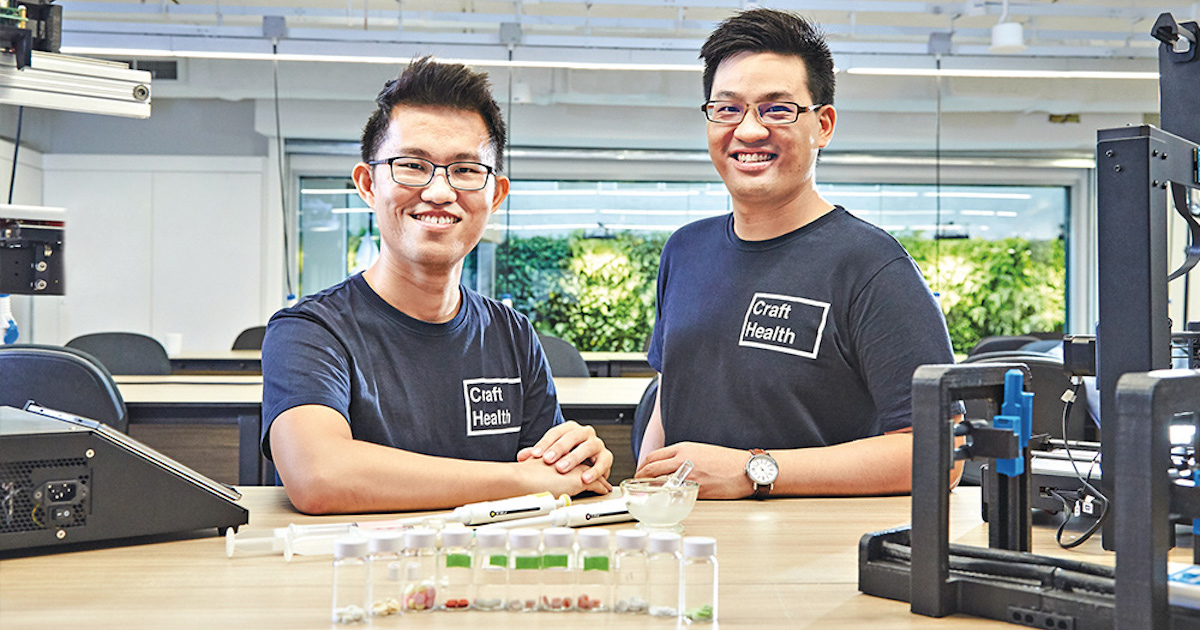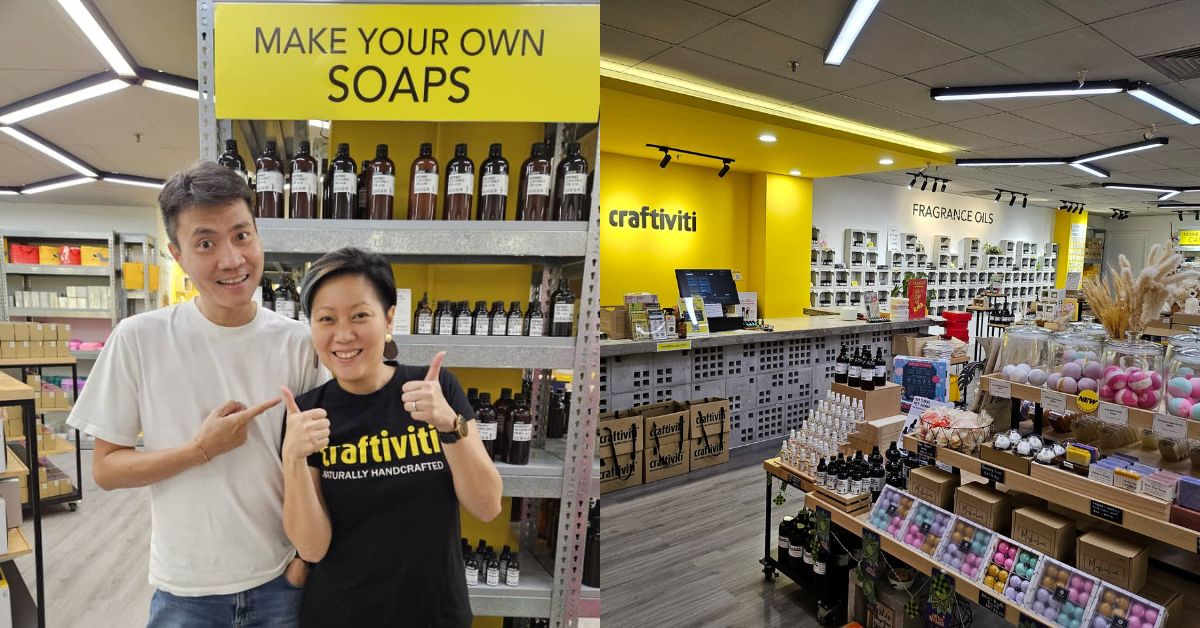As pharmacists, Goh Wei Jiang and Lim Seng Han have long noticed a common issue among elderly patients. An overwhelming number of medications are being prescribed for multiple diagnoses – mainly diabetes, hypertension, and high cholesterol.
These patients would leave the hospital or neighbourhood polyclinic after each visit with bags of pills and a complicated regimen to follow, which often led to confusion and mistakes.
Not content with just observing the problem, the duo decided to steer away from the traditional path of academic publishing and set out to solve a problem towards the end of their PhD studies at the National University of Singapore (NUS).
Seng Han’s expertise in 3D printing sparked an idea: Could they combine the active ingredients of various medications and put them altogether in a single pill?
They later secured a small research grant to test whether their theory works, and as it turns out, it does.
So right after they completed their respective theses, they enrolled themselves into the NUS Graduate Research Innovation Programme (GRIP), a three-month structured curriculum that guides participants through a startup process.
“Essentially, GRIP is like an incubator,” explained Wei Jiang. “We were the first cohort of participants when it was launched in 2018. It gave us ample opportunities to speak with many stakeholders – hospital administrators, doctors, clinicians, pharmacists, patients, among others.”
“After weighing all the evidence, we concluded that both the demand for better medication management and solution (3D printing medicine) are real, and thus, Craft Health was born.”
The many challenges to make a new technology work
Craft Health is now poised to change the game in pharmaceutical care.
Though promising, Wei Jiang admitted it was a challenge to woo investors in the early days. Back in 2019, 3D printing was still a foreign concept to many.
“Most of the time, it’s just Seng Han and I with our laptops. We didn’t have much to show and convince people. So, they were sceptical about what we could offer,” he added.
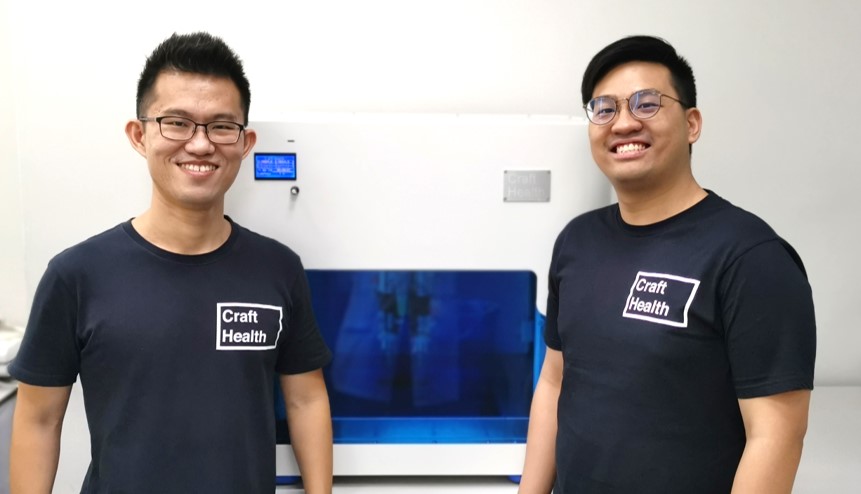
Some investors were excited about Craft Health being the first and only 3D printing medicines and nutraceutical company in Singapore and Southeast Asia. However, the cautious ones wanted to know if 3D printed medicine is something that had been done before so they could pattern match Craft Health’s success rate.
Alas, the irony means out of all the 80 potential investors that Wei Jiang and Seng Han spoke to, only one was willing to take a leap of faith in their company. And just when the duo thought everything is heading in the right direction, the COVID-19 pandemic struck.
In the beginning, we do possess a certain degree of naivety. We thought getting the 3D printing technology up and running is the only problem we must solve. It turns out this is only the start.
– Goh Wei Jiang, co-founder of Craft Health
Wei Jiang and Seng Han soon discovered more challenges lie in managing the logistics of mass production of 3D printing medicines, educating potential clients on the key advantages of 3D printing, and ensuring Craft Health can deliver all its promises efficiently and safely.
But Craft Health’s secret weapon lies in the chain of workflow that they had developed to support the entire 3D printing drug delivery process.
A one-stop shop for 3D printing medicines and supplements
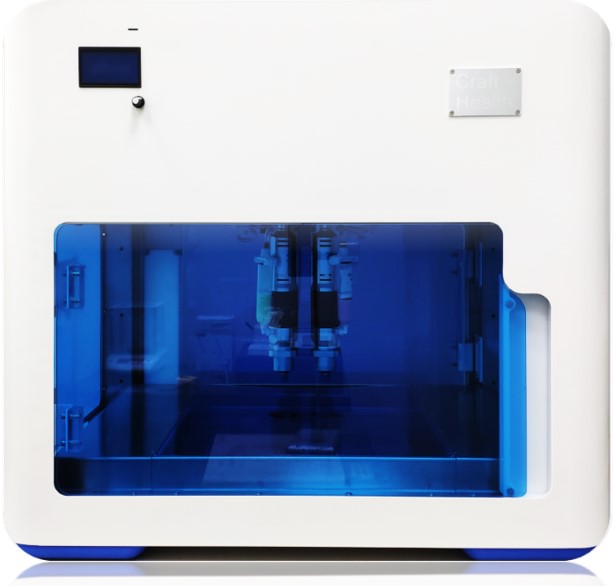
Primarily, it starts off with the 3D printers (CraftMake). These in-house hardwares are designed to perform 3D printing at room temperature and pressure, without the use of heat and UV light.
This ensures the active ingredients in each drug remain intact, allowing for the combination of different active ingredients and dosing in a single pill. Accompanying it is CraftControl or the software that instructs the 3D printers to rightfully print out the medications in the intended ways.
Craft Health can customise the active ingredients and release profile of medications to suit specific patient needs, whether for immediate or sustained release. As such, CraftBlends is the “recipe book” that carefully cooks up different formulations.
Lastly, all the information that is generated from or used by CraftMake, CraftControl, CraftBlends are stored in CraftDatabase. This archive system – one of the first in the world – allows Wei Jiang and Seng Han to better understand the interplay of various materials and factors, so they can 3D print more specialised or even personalised medicines.
For example, some active ingredients give medications an unpleasant taste. Craft Health can step in by 3D printing a multi-layer pill or a pill that encapsulates another pill to mask the taste. Likewise, the outer layer of the multi-layer pill can be tailored to protect from the acidic content of stomach and release its embedded content in the intestine for better absorption.
At the same time, Craft Health is also building on its nutraceutical arm.
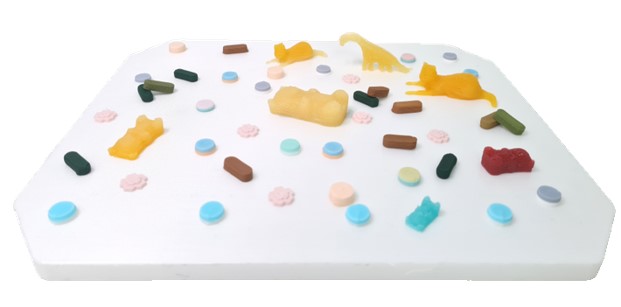
CraftBeads are 3D printed granules that offer a bespoke approach to supplementation. Instead of buying bottles of vitamins off the shelves and eat them one by one, CraftBeads can mix and match to create custom blends based on individuals’ supplementary needs.
On the other hand, CraftDelights is a 3D printed gummy side project that started as a sweet solution targeting paediatric patients, although it quickly earned fans among adults.
Again, because we 3D print these gummies without heat and UV light, that means we can incorporate things like probiotics. The technique also permits different shape, size, geometry and taste. That’s probably why people are excited about it, as they can see very highly personalised gummies being made.
– Goh Wei Jiang, co-founder of Craft Health
The regulatory hurdle of 3D printing medicines
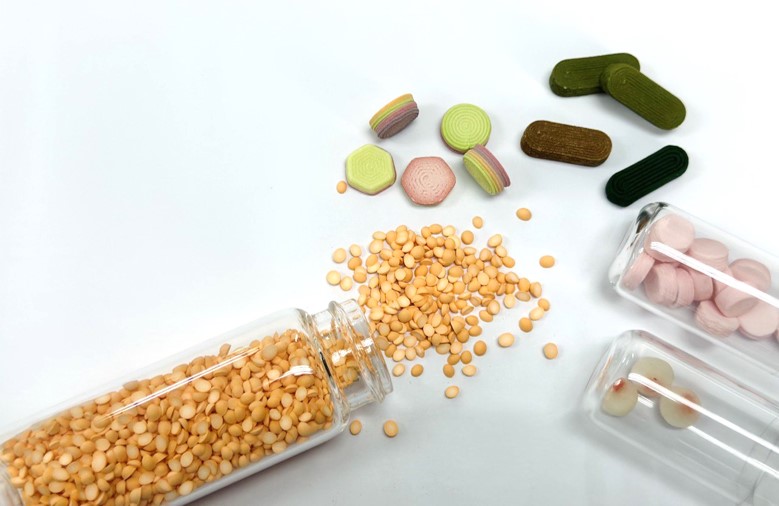
Presently, there is no regulatory framework for 3D printing medicines in Singapore and worldwide.
The limbo comes in how drugs are being approved in general. Typically, health authorities will approve a specific brand of medication that comes in a specific dose. A new consent is needed for any adjustments in active ingredients or dosage.
In the case of 3D printing medications when the combination of active ingredients and dosage becomes limitless, it’s impossible to officially register and green light every mix. As such, Craft Health is planning to overcome the hurdle via the compounding route.
According to Wei Jiang, compounding is a pharmaceutical practice that’s not very common in Singapore.
In some countries, patients can request certain ingredients to be added or removed from a particular medication that they are taking due to allergy or other medical reasons. In that case, pharmacists will have to specially “compound” the drugs for the patients.
Therefore, Craft Health is planning to do a small clinical trial at the end of this year with a public hospital. They want to prove that it’s just as efficacious for patients to take a 3D printed pill containing active ingredients from three different types of medications versus taking them separately.
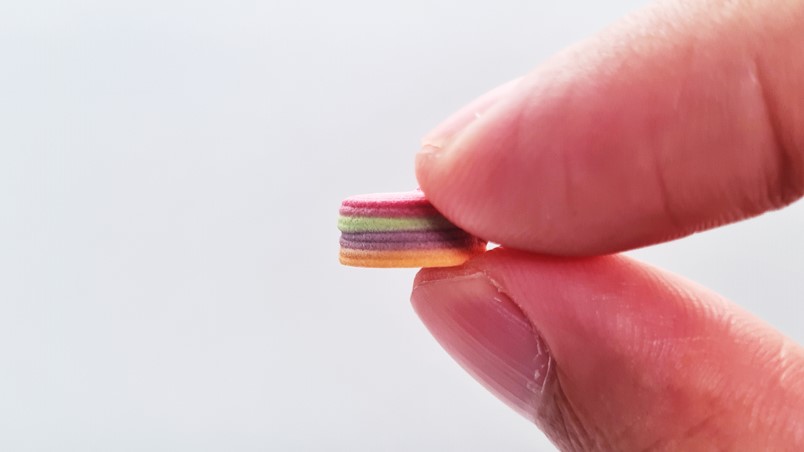
“It’s a very low bar for us to cross,” Wei Jiang said confidently. “But our rationale is to provide some preliminary evidence to the doctors that our products are safe and effective.”
Eventually, Craft Health hopes to develop a menu of 3D printing medicines so doctors can just prescribe off the list accordingly.
On taking a road less travelled
While it may still be years before Craft Health, and probably the whole 3D printing medication industry, arrives at their ultimate goals, the founders are glad it’s emerging as a pioneering and dominant player in the field.
“Establishing Craft Health as a deeptech spinoff from NUS is already a huge advantage. It shows that a reputable institution is backing up our technology. There are some validations that this is doable,” noted Wei Jiang.
As exciting as it seems, Wei Jiang also confessed being an entrepreneur means being exposed to many uncertainties that he would not have faced in the days working as a pharmacist.
Being an entrepreneur means everything is thrown at you at once. You must do everything, including fixing your own aircon in the office.
– Goh Wei Jiang, co-founder of Craft Health
Whether it’s the 3D printing technology itself, or the operation, business, and legal side of things, Wei Jiang and Seng Han had learnt a lot in the past four years, and they learnt them fast despite the steeo growth curve.
Indeed, like the dazzling array of prescription permutations that 3D printing medications and supplements can offer, 3D printing technology itself holds seemingly endless potential in the pharmaceutical and nutraceutical industries. The development is taking place so rapidly that there is not much time for us to be overwhelmed before a technology catch on us.
Featured Image Credit: National University of Singapore
